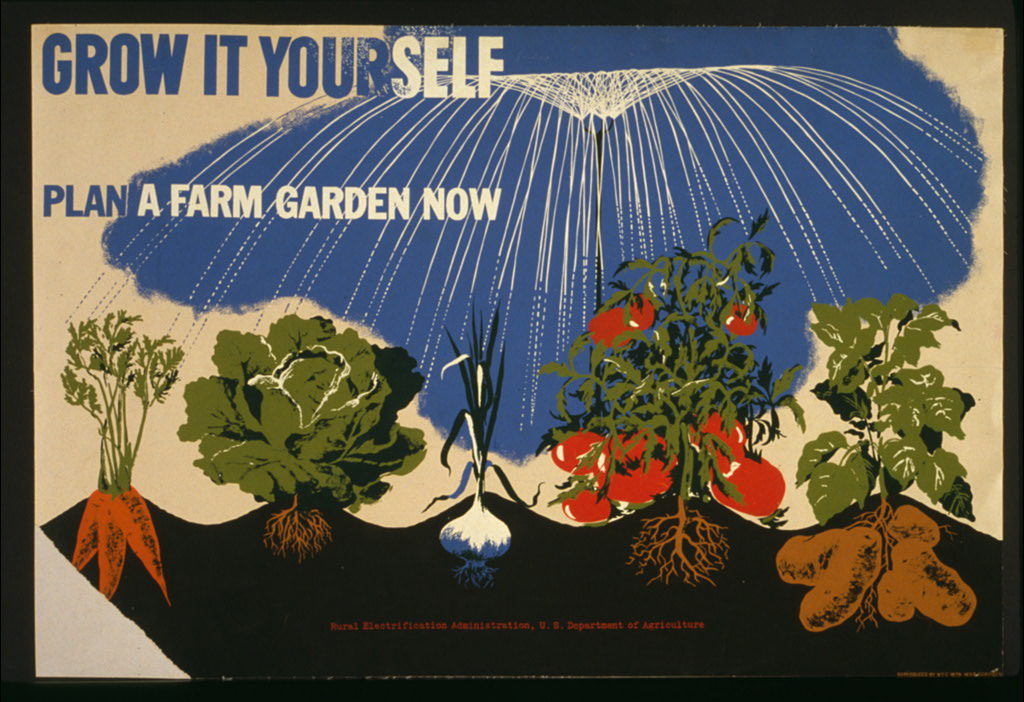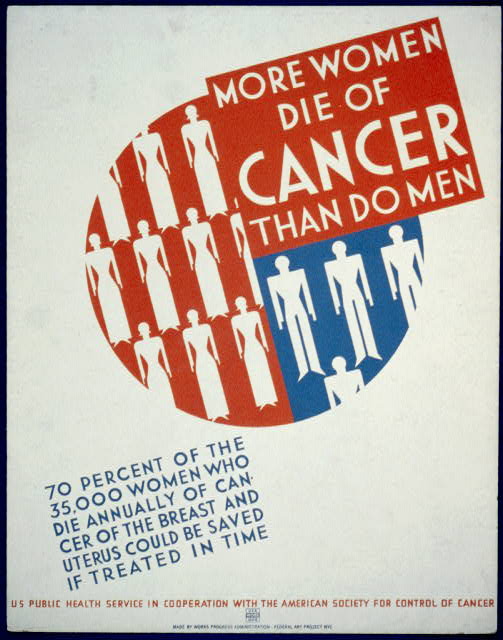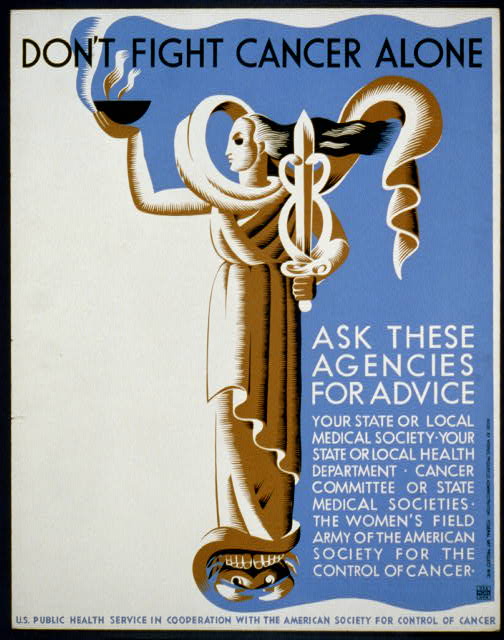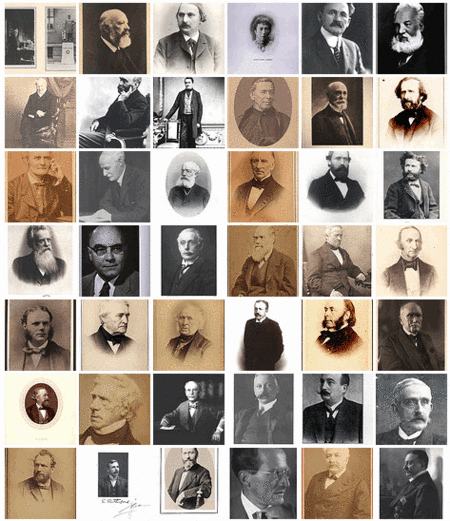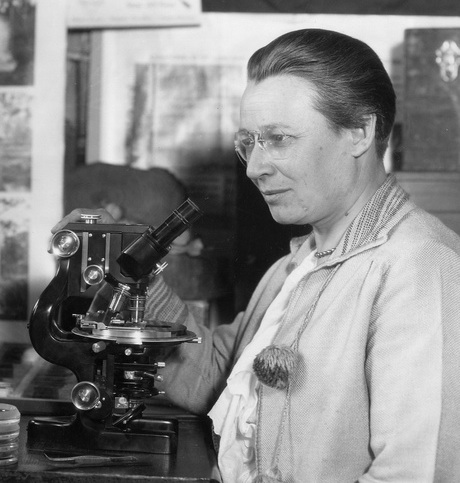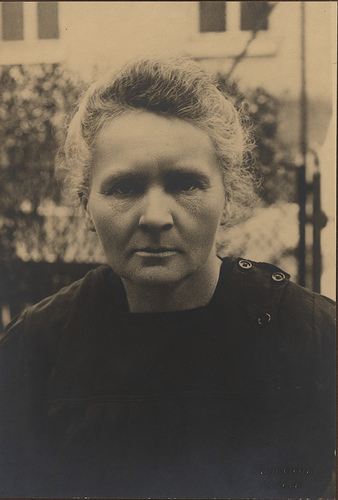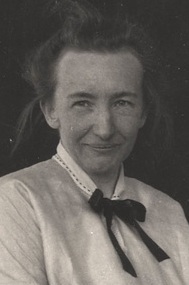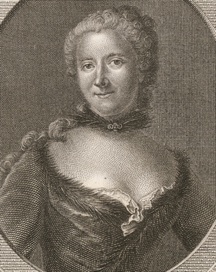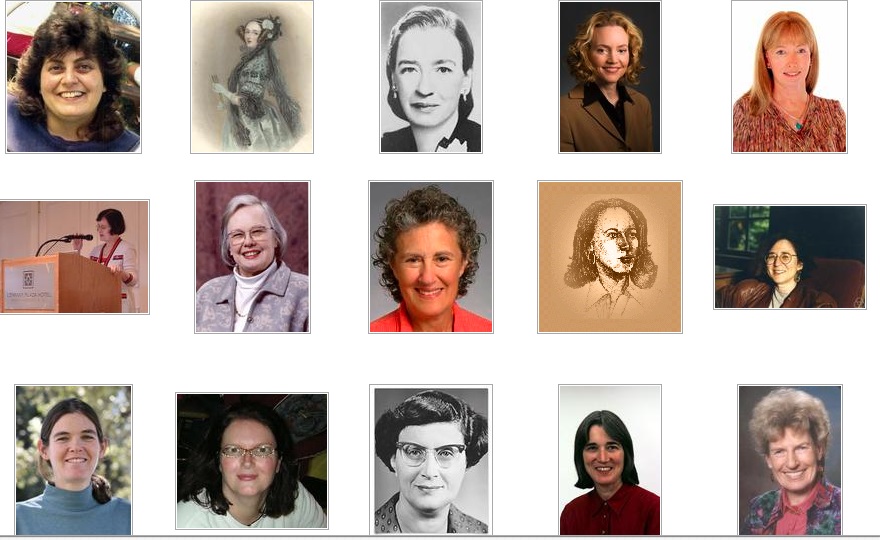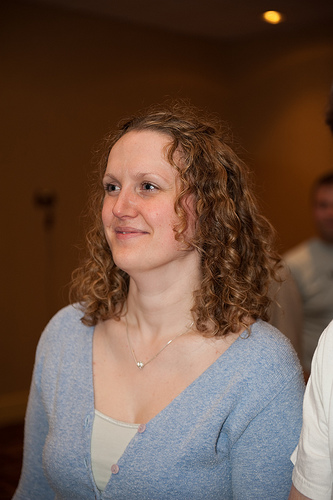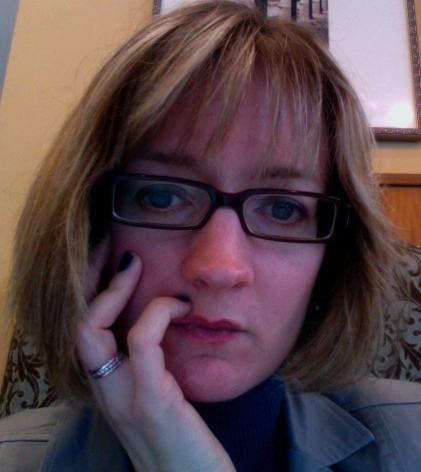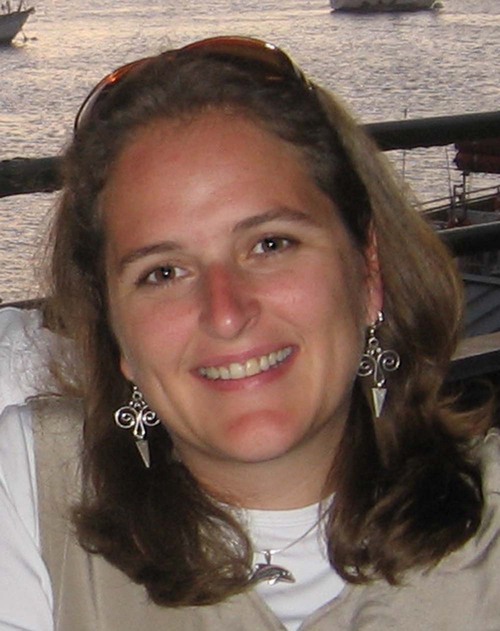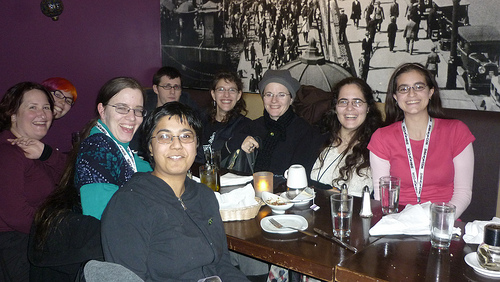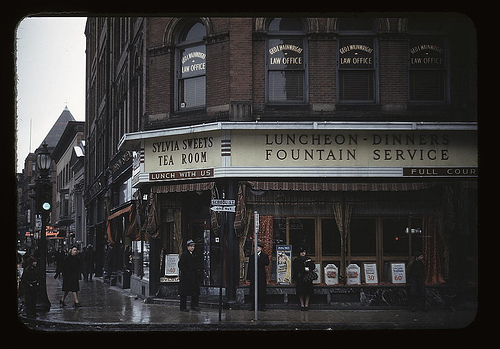In his introduction, Bruce Bruemmer began with a disarming “Thank you disembodied voice” – and merrily rolled along through a short, cheery and heartfelt introduction for SAA president Elizabeth W. Adkins. He saved time (and likely vocal stress) by prerecording a YouTube video enumerating Adkins’s accomplishments . He led rounds of applause for Adkins’s father, aunt, uncle and husband. Bruemmer claims her only fault is that she is too serious. That she did not perceive the inherent humor of Velveeta and Miracle Whip concerned him.
He finally found the chink in her armor when he broke down laughing at the apparently often repeated J. L. Kraft quote “What we do, we do do” – and at this she finally admitted that it was ‘a little funny’.
Elizabeth Adkins’s Plenary Speech
Adkins began her talk by leading the hall in applauding the program committee, the host committee, the sponsors, past presidents, international visitors, and council members – each in turn.
She then made an exciting announcement – American Archivist is being made available online! If you are onsite at the conference, there will be a peek at the beta version on display on Friday in the Embassy Room. Issues from 2000 forward will be available online and they are still working on the digitization of all back issues. SAA will still print the journal. Access to the digital version will be available via a link off the SAA homepage. All but the 6 most recent issues will be available freely to anyone. More work will need to be done to improve visibility through indexing services and complete the digitization of back issues.
After this, she launched into her main speech “Our Journey Toward Diversity – And a Call to (More) Action”. I will do my best to include as many points as I managed to fully captured in my notes. If this topic interests you – I encourage you to watch for publication of the full original. Please forgive me any misquotes, omissions and oversights. I have also included a few additional details on points that were in the presentation.
Our Journey Toward Diversity – And a Call to (More) Action
Adkins first contemplated diversity of the presidents of SAA by considering how long had it had been since a corporate archivist had been SAA president. The answer was William Overman in 1957 – and Overman is the only other corporate archivist to ever be selected as president. Adkins is also one of only 16 women to have been SAA President.
What does SAA Mean by Diversity? Why do we care? Adkins reviewed the 2004 census of the profession known as A*CENSUS . With its 5,620 responses it was much more extensive than the surveys done in 1956 and 1982.
Gender Imbalance
From A First Look at A*CENSUS Results (published in August of 2004):
The archival profession has experienced a significant shift in gender in the last half century. The A*CENSUS survey indicates that the ratio of women to men is now approximately 2:1. This is almost a mirror image of the gender distribution reported in Ernst Posner’s 1956 survey of SAA members, in which 67% were men and 33% were women.
Adkins stated that the current gender imbalance is an issue for two reasons:
- we need men’s perspective and input
- since women are still generally paid less than men – having a gender imbalance is likely driving down salaries
Library and Museums are seeing this same gender imbalance while the gender imbalance is flipped in the IT industry.
Race and Ethnic Diversity
According to A*CENSUS 2004 only 7% of the SAA membership is non-white while the general US populate is 25% non-white (with an even greater number of non-whites in kindergarten classes today).
Why should we care?
* “It’s the right thing to do”
* Completeness of the documentary record
* It’s good business business
* Competition with other professions and career paths
Dr. Harold T. Pinkett (1914-2001) was the first African American at NARA – named an SAA fellow in 1962, editor of American Archivist 1968-1971 and council member from 1971-1972.
SAA first diversity efforts launched in 1970s
From 1936-1972, women in SAA made up only 28-33% of SAA members. The 1970s brought lots of progress for women’s representation and activity in SAA.
Work on Racial and Ethnic diversity started in 1978…more work supported 1981-1987, some efforts supported – other efforts (such as desire for a fellowship to support study) were not.
The Archivists and Archives of Color Roundtable (AACR) founded in 1987, took on this name in 1994 (?). The Harold T. Pinkett Award was established in 1993 “to encourage minority students to consider careers in the archival profession and promote minority participation in SAA”.
In 1997 SAA created a Diversity Task Force and a final report was submitted in 1999. SAA Council accepted final report and moved forward in an ad hoc matter. In 2002 members of the task force were frustrated by lack of progress and passed a resolution asking for info on progress. The crux of the answer was “not a lot”.
In May 2003 the SAA council created a ‘diversity committee’… council is now actually talking about diversity and actually putting things in motion.
Focus on Students
There has a been a huge growth of Student Chapters. The concept was approved by the SAA council in 1993. There has been a growth from 3 chapters to nearly 30. Currently 20% of all members, more than 10% of attendees at this meeting, are students. Adkins hopes the students will help bringing more diversity into SAA and asked for a round of applause for the students attending the meeting.
Where are we now?
In 2005, SAA launched a new strategic planning effort and Diversity was identified one of the three highest priorities (with Technology and Public Awareness being the other 2).
What is the state of diversity today? Lots of talk – but how much actual action?
What is done?
- position statement
- census completed
- monitoring progress
- education for non-archivists who serve under represented groups
- experimentation with the idea ofDiversity Fair
Next actions?
- outreach on college and university campuses
- provide other “entry points” into the archival profession
- Archival education
The Task Force recommendations included improvement of the SAA website, providing financial aid for minorities and under represented communities, and working on SAA’s new member development.
Adkins presented an interesting idea of reaching out to kids age 10-15 such that we might influence their future career choices. She also suggested that SAA emulate the ALA model of the Spectrum Scholarship. Established in 1997, the Spectrum Scholarship program granted over 60 $5,000 scholarships this year alone. While SAA does not have the money to support a scholarship at this level – Adkins announced that a new SAA Minority Scholarship has been approved by the SAA council (this leading to the first spontaneous applause of the speech). She also made a big point of pointing to the Midwest Archives Conference’s Archie Motely Memorial Scholarship for Minority Students and saying that they should get credit as leaders in the area of minority scholarships.
“Diversity starts with a commitment to inclusion”
Addressing diversity concerns is hard work, but diversity will improve SAA in ways we can’t grasp now. She compared future progress to past efforts that now seem obvious (provision of childcare, the membership committee..etc).
Adkins concluded that that we need to build on a foundation of inclusion. A ‘welcoming respectful attitude’ will help us move forward. But we need to move forward with not just words – but with also with actions.
The hall gave her a standing ovation. Confronted with this, Adkins remarked that she had made it through so far but now she was getting all verklempt .
